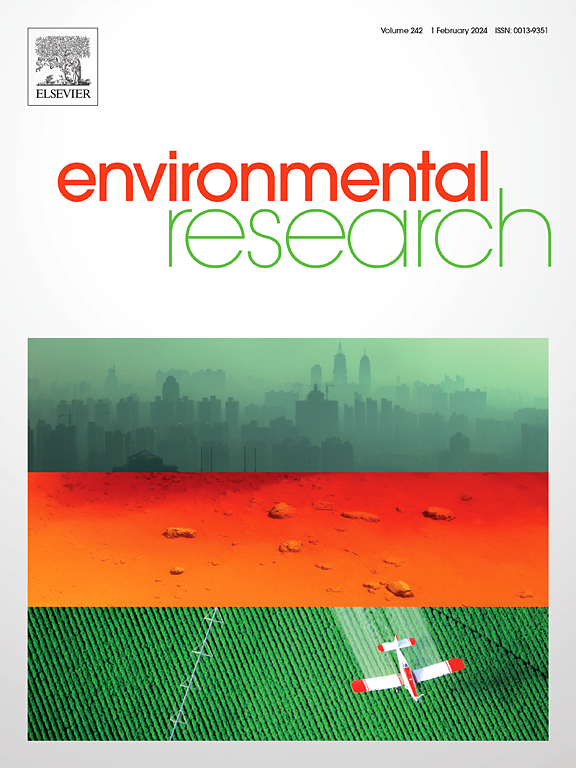Occurrence, ecology and health risk assessment of organophosphate triesters and diesters in surface and ground water from southwest of China
IF 7.7
2区 环境科学与生态学
Q1 ENVIRONMENTAL SCIENCES
引用次数: 0
Abstract
The occurrence of organophosphate triesters (OPEs) and organophosphate diesters (m-OPEs) in ground water is still unclear. To fill the blank, ground water samples in dry and wet seasons, surface river water and paired sediment samples were collected in Sichuan province and analyzed for 14 kinds of OPEs and 7 m-OPEs. Except Trimethyl phosphate was scarcely detected, the other OPEs were extensively found in aquatic environment. The concentrations of Ʃ14OPEs and Ʃ7m-OPEs ranged from 45.0 to 231 ng/L and from 1.25 to 62.3 ng/L in ground water and ranged from 2.20 to 1709 and from 0.08 to 35.5 ng/L in surface water, respectively. Compared to other reports, the pollution in Minjiang and Tuojiang river was at medium level. The concentration ratios and correlation analysis between OPEs and m-OPEs indicated that OPEs in ground water had three main sources, and m-OPEs mainly came from direct usage. Low ecological risk was found for surface water. The carcinogenic and non-carcinogenic risks of OPEs in surface and ground water via ingestion and dermal contact in moderate and high exposure scenarios were assessed, and results suggested the risks to human which mainly caused by Tri(2-chloroisopropyl) phosphate could be negligible.
西南地区地表水和地下水中有机磷三酯和二酯的存在、生态和健康风险评价
地下水中有机磷三酯(OPEs)和有机磷二酯(m-OPEs)的存在尚不清楚。为了填补这一空白,在四川省收集了干湿季节的地下水样品、地表水和成对沉积物样品,分析了14种OPEs和7种m-OPEs。除三甲基磷酸很少检出外,其他有机酸在水生环境中广泛存在。地下水中Ʃ14OPEs和Ʃ7m-OPEs的浓度分别为45.0 ~ 231 ng/L和1.25 ~ 62.3 ng/L,地表水中Ʃ14OPEs和Ʃ7m-OPEs的浓度分别为2.20 ~ 1709和0.08 ~ 35.5 ng/L。与其他报告相比,岷江和沱江的污染处于中等水平。OPEs与m-OPEs的浓度比及相关分析表明,地下水中OPEs主要有三个来源,m-OPEs主要来自直接利用。地表水生态风险较低。评估了中、高暴露情景下地表水和地下水中OPEs通过摄入和皮肤接触的致癌性和非致癌性风险,结果表明主要由三(2-氯异丙基)磷酸引起的对人体的风险可以忽略不计。
本文章由计算机程序翻译,如有差异,请以英文原文为准。
求助全文
约1分钟内获得全文
求助全文
来源期刊

Environmental Research
环境科学-公共卫生、环境卫生与职业卫生
CiteScore
12.60
自引率
8.40%
发文量
2480
审稿时长
4.7 months
期刊介绍:
The Environmental Research journal presents a broad range of interdisciplinary research, focused on addressing worldwide environmental concerns and featuring innovative findings. Our publication strives to explore relevant anthropogenic issues across various environmental sectors, showcasing practical applications in real-life settings.
 求助内容:
求助内容: 应助结果提醒方式:
应助结果提醒方式:


